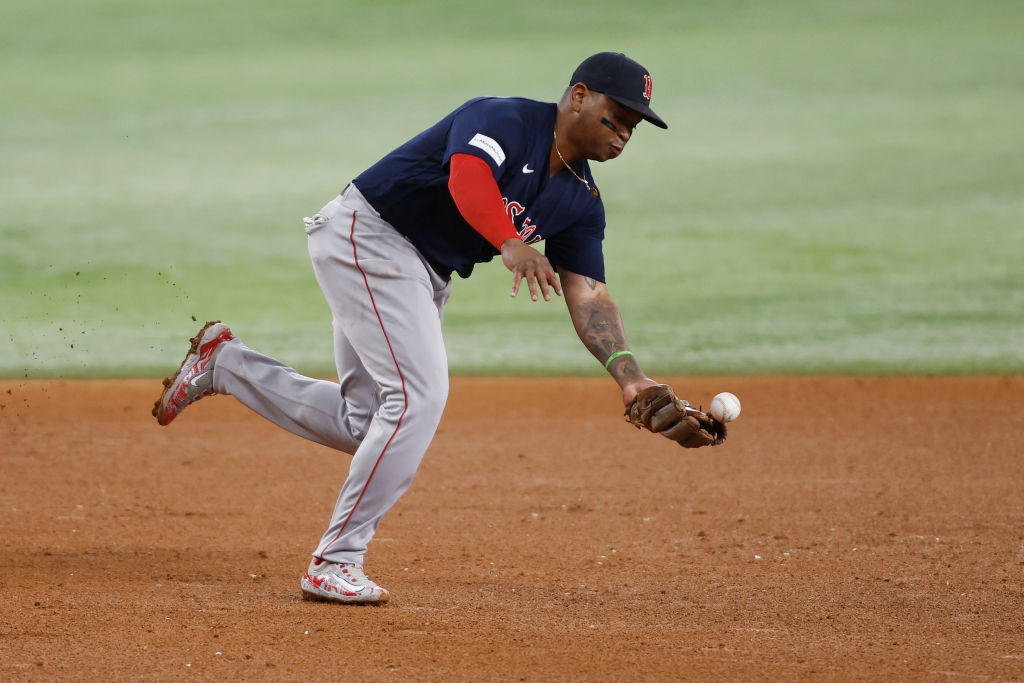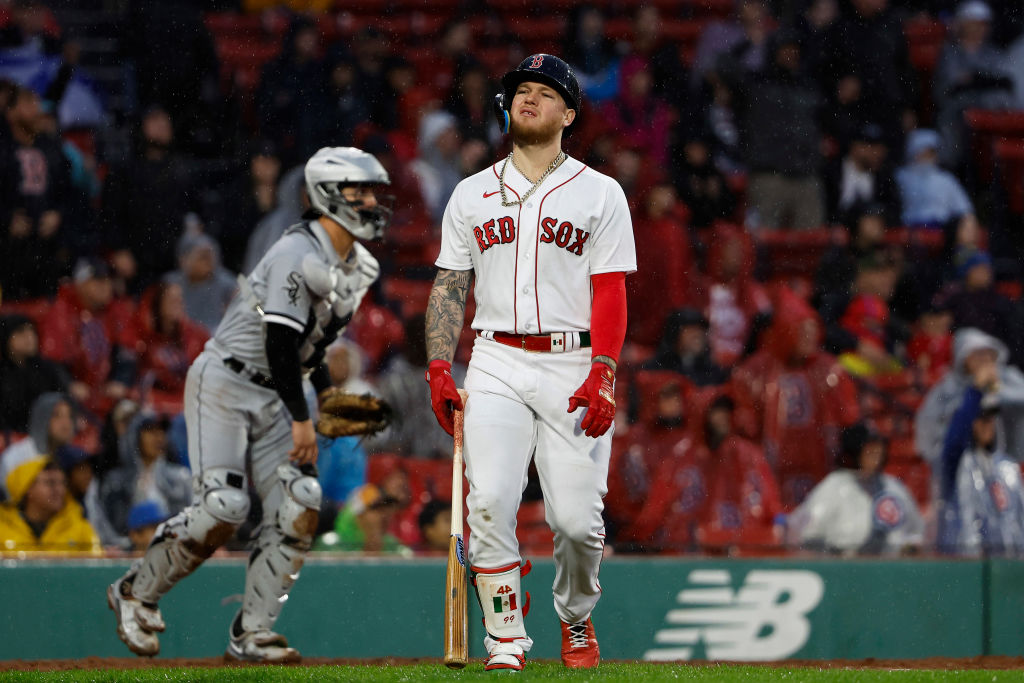Mazz: For now, accept mediocrity from the Red Sox catcher
Generally speaking, let’s admit that having an All Star-caliber catcher is a luxury. Nonetheless, when the Red Sox catcher has been ranked among the top 25 percent in baseball, the gains have been indisputable.
In 2004, 2007 and 2013, the Sox ranked first, eighth and fifth in the majors in OPS from the position. (In the interest of fairness, the Sox were last in 2018, though that team ranked No. 1 in the majors in payroll and was stacked.)
The general point is that catcher is a terrific position to gain an advantage if you have the capability to do so, something that was particularly present during the late ’90s and early 2000s, when it felt like someone among the trio of Jason Varitek (Red Sox), Jorge Posada (Yankees) and Ivan Rodriguez (Rangers, Marlins, Tigers) was always in the World Series.

BOSTON, MASSACHUSETTS – SEPTEMBER 09: Connor Wong #12 of the Boston Red Sox scores a run past James McCann #27 of the Baltimore Orioles during the fourth inning at Fenway Park on September 09, 2023 in Boston, Massachusetts. (Photo by Maddie Meyer/Getty Images)
Today, of course, the division-winning Baltimore Orioles lead the way with Adley Rutschman, who ranked fourth in OPS among the 19 major league catchers who had at least 400 plate appearances. But let’s stick to Red Sox catchers and the challenge they face.
In the long-term, of course, the drafting this year of the left-handed-hitting Kyle Teel bodes well, especially because the 21-year-old ripped up Single-A and was quickly promoted to Double-A Portland, where he didn’t skip a beat. But it would be foolish to expect Teel to have an impact at the majors in 2024 – if it happens, it’s a huge bonus – which means the Sox need to find other solutions. We all love a youth movement, but it can’t happen all at once.
Or, perhaps, keep the status quo.
Let’s start with the obvious:
Two ponies don’t equal a horse
In 2023, the Red Sox basically went with Connor Wong and Reese McGuire, both of whom are ideally suited to be backup catchers (at best) on a championship-caliber team. Individually, among the 45 major league catchers with at least 400 plate appearances, Wong and McGuire ranked a respective 31st and 32nd. It should surprise no one, then, that Sox catchers as a whole rated below average in offense.
Defensively, among 49 players to catch 400 innings, Wong and McGuire ranked 17th and 34th. Wong threw out 21 percent of base stealers while McGuire finished at just 17 percent, which generally placed the Sox in the middle of the pack.
So what should the Sox do?
Maybe nothing.
In an ideal world, Wong would be a backup to a capable left-handed-hitting starter – like Teel, for instance – but such a creature isn’t available (as far as we know). The free-agent market is decidedly thin. And while trades are always an option, the Sox need to pick their spots carefully (read: pitching) because they have more than just one or two needs.
So, should you be angry if the Sox stand pat behind the plate? Not necessarily, though an upgrade of McGuire wouldn’t hurt. Stopgap measures are entirely acceptable at a place like catcher, especially given the draft of first-rounder Teel. But if the Sox take this approach at too many positions, they’re going to end precisely where they were in 2012, 2014, 2015, 2020, 2022 and this year: last place.
The conclusion: the Sox may need to bite the bullet here. But if upgrade the areas on the team that are most necessary they should be fine, particularly if Wong at all improves.














